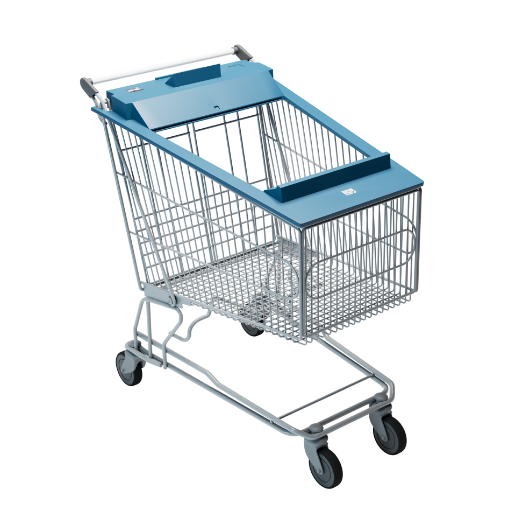
Shopping cart for self-service and self-payment by customers in grocery stores.
Base technologies:
RFID identification, photoelectric and infrared detection.
Patents: ES2662696B1, US10073996B2, CN108885753A, EP3509028A1, JP2019533263A, IN201927005706A, BR112019004169A2



Advantages
for the User
1 – Self-service without product scanning
The trolley’s minicomputer automatically totals the items that are being inserted or extracted without any other user intervention. The patented identification of the products is carried out by the window of the frame fast4shop with RFID technology, a system of passthrough detection with a photoelectric grid and an infrared sensor that incorporates the frame.
A shopping cart without product scanning!
2 – Information during purchase
If the user has a smartphone with the fast4shop App and places it in the frame bay, he can see the cart’s shopping list at all times (units, items, RRP and totals), as well as specific information for each product.
The addition or removal of a product from the cart is automatically reflected in the App.
Constant control of the pucharse in my App!
3 – Self-payment
At the unattended exit line, the customer simply fits the cart into a box with a gate barrier. A display shows the cost of the purchase and the customer makes the electronic payment, after which the barrier is raised and the exit is made. This whole process can take less than 15 seconds.
Pay in 10 or 20 seconds, zero queues!
4 – Agility at the exit
The elimination of product scanning allows the user to initially insert bags into the cart basket, inserting the products directly into them. Once at check-out and after payment, simply remove the bag with the items and stack the cart.
No scanning, I put bags in the cart and grab them at the exit!


Advantages
for the Business


Converting cashiers into sales assistants
The high HR costs in checkout lines currently do not generate added value, their conversion into direct sales assistants in the store or as order preparers does it. This necessary reconversion is estimated at 80%, balancing personnel costs between the store and the growing online demand.

Transfer of unproductive costs from store to e-commerce
In this decade, grocery distribution from the store to the customer through the electronic commerce channel will reach one third of total. It is imperative to transfer mechanizable costs of store personnel to HR requirements for order preparation and online channel logistics. With a current cost of RFID tag around $ 2c and with a downward trend in the future with magnetic inks (Chipless), the fast4shop shopping cart can incorporate these costs without price inflation.

Traceability at the unit item level
With the EPC code of the RFID tag, traceability is mechanized at the item level (SKU) that the current barcode does not reach, ensuring the health directive for end-to-end traceability.

Control of perishables in real time
With the current scanning of generic article, the composition of perishables on the shelves is not resolved. The review is manually done by a store operator (significant cost). The control of perishables is automatic from the Host on the store immediately and without personnel with the introduction of products in the fast4shop shopping cart.

Store stock update in real time (omnichannel)
The commitment to a friendly e-commerce service based on proximity (Click & Collect) requires a reliable and real-time control of the stock of items on the shelves (this is one of the most outstanding challenges of Offline to Online). The fast4shop shopping cart resolves in advance (before payment) the stock available in store with its update on the portal.

Nightly store inventory with RFID robots
The inventory with RFID robots would mean a significant decrease in the costs of managing the store. With a 1,500 m² store area, 2 or 3 robots would sort the available stock in a short time.

Iot perspective, home automation in kitchen, fridge, pantry…
The migration towards RFID coding of products is leading to a demand that in the coming years will largely be automated, with the dialogue between sensors and devices at home on the IoT scenario (home automation in the kitchen, refrigerator, pantry …) generating unattended purchasing lists in an App. RFID is a constitutive part of the IoT ecosystem.




